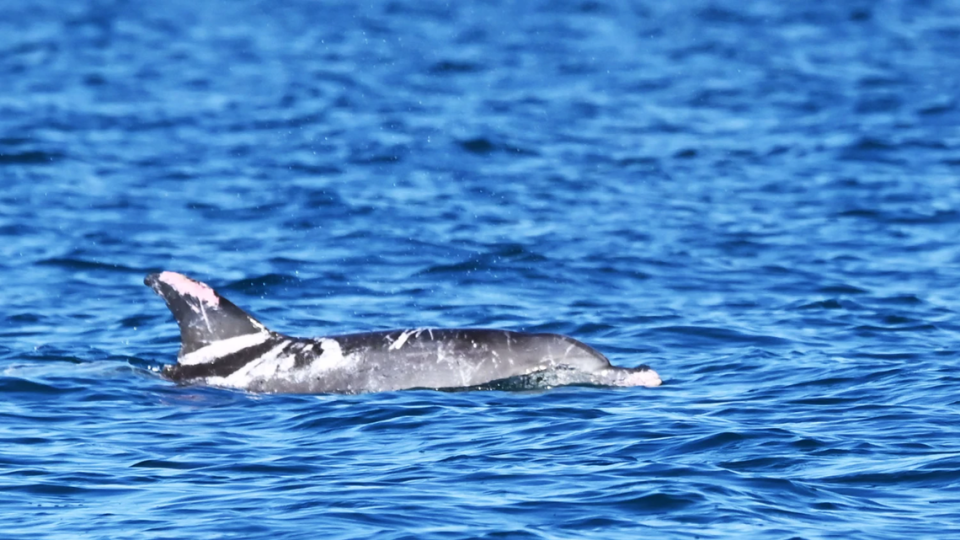‘Extremely rare’ sea creature leaps out of water and stuns scientists in Australia
While boating off the coast of Australia, scientists saw a “massive splash” — and encountered a sea creature with “extremely rare” coloring. Meet Speckles.
“It was near the end of the day, we were about to head in and we saw this massive leap, this massive splash so we thought we’d go over to investigate,” Georgina Hume told the Australian Broadcasting Corporation.
Hume and the other researchers approached and spotted a group of five common bottlenose dolphins foraging for food, according to a study published Jan. 14 in the journal Aquatic Mammals. Hume was out in Hervey Bay in September 2022 to survey these dolphins as part of her Ph.D. research.
But one dolphin stood out.
“We noticed it straight away as it had such strange colouration compared to the others,” Hume said in a Feb. 5 news release from the University of the Sunshine Coast.
Instead of the normal gray coloring, the dolphin had several patches of white splashed across its body, a photo shows.
Researchers identified the animal, nicknamed “Speckles,” as having an “extremely rare skin condition” known as piebaldism, the university said.

“Piebaldism is similar to albinism and leucism, where the animals typically have white skin, feathers or fur,” one of the study’s co-authors Alexis Levengood said in the release. “Piebaldism is a partial-loss of pigmentation so the individuals show this patchy colouration.”
Hume added that “one of the key things of this piebaldism is that (the animals) can look a little bit sunburned, so the top of (the dolphin’s) dorsal fin had a bit of red,” she told the Australian Broadcasting Corporation.
Only 24 cases of piebald dolphins have ever been recorded, the study said, and only six have been photographed. Speckles is the first piebald dolphin ever seen in Australia.
The university described Speckles as “one of the world’s most unusually colored dolphins.”
“I’ve worked in this field for about 15 years across three different continents and I’ve never seen it myself first hand,” Levengood told the Australian Broadcasting Corporation.
Speckles leapt out of the water several times and came within about 6 feet of the researchers’ boat, allowing them to get “a very clear look” at its coloring, Hume said. Overall, it appeared healthy and unaffected by its skin condition.
Researchers observed the piebald dolphin for about 40 minutes and have not seen it again, the study said. They hope to study it more during Hume’s ongoing research project.
Hervey Bay is along the northeastern coast and about 600 miles northeast of Sydney.
“We’re hoping that my PhD is the start of a long-term project in the region and it might help with the potential of starting a marine park” in the area, Hume told the Australian Broadcasting Corporation.
The research team included Hume, Levengood, Melina Keane and Bonnie Holmes.
Watch elephant seals cover themselves in sand on California beach. There’s a reason
Penguin chick makes history at California aquarium. Why is it a ‘remarkable milestone’?
‘Wait for me!’ Watch as surprise straggler tags along behind huge elk herd in Colorado

